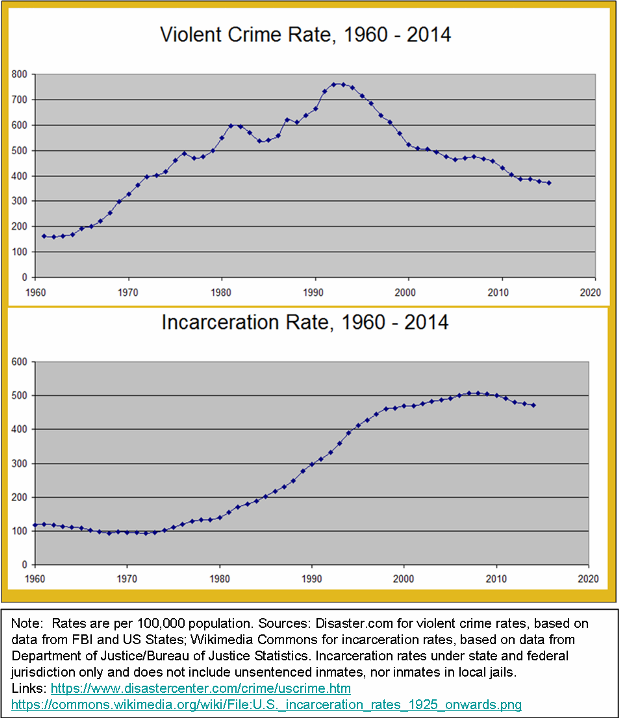First, violent crime and incarceration rates, considered separately:
What I see is violent crime rising steeply from 1960 to the early 1990s, while the incarceration rate remained rather flat until the late 1970s, then rising to its peak in 2007-2008, then dipping slightly.
Here’s a table version in 10-year increments:
What seems crazy about these numbers is that violent crime in America skyrocketed between 1960 and 1990, but incarceration rates barely budged until the 1980s. Of course, there’s always a time lag between committing a crime and starting a prison sentence, so any relationship between crime rates and incarceration rates would also be subject to a time lag. But why would it take 20 years for the incarceration rate to take off? Perhaps a threshold effect was at work - crime in the US had to get really, really bad before the public reached the boiling point of “no more - just lock ‘em up!”
We may not remember now, but the criminal justice system underwent considerable reform in the 1970s, with increased focus on rehabilitation and alternatives to incarceration. And what did it get us? A violent crime rate 450% higher in 1980 than in 1960. Yes, there were other forces at play but the take-away for many Americans was it was time to get tough on crime. Which in practice meant more people sentenced to prison and longer prison terms overall. And so from 1980 to 2000, the incarceration rate tripled, while the violent crime rate actually went down during the same period.
Here’s another way to visualize these trends:
it looks like the US did not exceed the 1960 incarceration/violent crime ratio until 1997. But it doesn’t make much sense to compare current incarceration rates with current or even recent crime rates since many of those incarcerated at any given time are paying their dues for crimes committed well before they went to prison.



